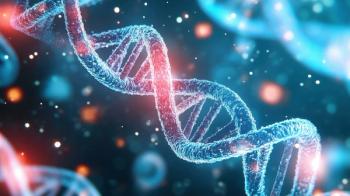
Energy Metabolism in Clonal Plasma Cells May Drive Survival Outcomes in Newly Diagnosed MM
The findings, say the researchers, provide a basis for future exploration of the activity of energy metabolism pathways in clonal plasma cells of patients newly diagnosed with the disease.
Increased expression of certain genes that play a role in pathways serving as hallmarks of cancer cells may have survival implications for patients newly diagnosed with multiple myeloma (NDMM), according to a new study.
The researchers of the study, which included more than 700 newly diagnosed patients from the prospective MMRF CoMMpass dataset, created a system for categorizing patients based on their expression levels of certain genes associated with major cellular energy metabolism pathways, glycolysis, and oxidative phosphorylation.
Scores—called energy metabolism molecular signature (EMMS) scores—were independently associated with worse progression-free (PFS) and overall survival (OS). The findings, say the researchers, provide a basis for future exploration of the activity of energy metabolism pathways in clonal plasma cells of patients newly diagnosed with the disease.
Using the scoring system, a point was added for each of the 12 included genes with fragments per kilobase of transcript per million (FPKM) that were above the median or considered “high” expression. Median OS was 55 months for patients with high scores (between 9 and 12) compared with 94 months for patients with low scores (between 0 and 8). Median PFS was 24 months for patients with high scores compared with 42 months for patients with low scores.
“Higher EMMS score likely indicates more aggressive disease biology of NDMM by being a transcriptomic-based reflection of the higher proliferative capacity of the MM cells,” commented the researchers.
They continued, “It still remains one of the strongest predictors for poor survival outcomes and had a high association with [high risk] cytogenetics. However, it’s also intriguing whether pharmacologically disrupting the associated metabolic pathways could be utilized as a therapeutic opportunity for MM or as a preventive option in stopping the progression of precursor disorders like MGUS or SMM from ever progressing to MM.”
In addition to having high-risk cytogenetics, patients with higher EMMS scores were more likely than patients with low scores to have 1% or more clonal plasma cells in their peripheral blood (12% vs 4%), elevated Lactate dehydrogenase (58% vs 48%) and International Staging System 3 disease (42% vs 22%).
The researchers also applied their EMSS scoring system to a previously published transcriptome dataset of other plasma cell disorders in an effort to explore differences in activity of energy metabolism pathways. They found that expression of the 12 genes were higher in patients with MM compared with precursor disorders, such as smoldering MM and monoclonal gammopathy of undetermined significance.
“Clinical utility of this molecular signature still needs to be validated in other datasets from larger prospective studies, and ideally in those where the NDMM patients are being treated with current induction regimens,” wrote the researchers.
“Yet, the increasing rate of high EMMS scores among patients corresponding to the increasing malignant potential of their plasma cell disorders is supportive of its biological relevance. Our prior work has supported this observation by demonstrating that unique metabolites derived from the increased activity of the TCA cycle, such as 2-hydroxyglutarate (2-HG), have been implicated in the pathogenesis of MM,” they concluded.
Reference:
Evans L, Anderson E, Jessen E, et al. Overexpression of the energy metabolism transcriptome within clonal plasma cells is associated with the pathogenesis and outcomes of patients with multiple myeloma. Am J Hematol. Published online April 28, 2022. doi:10.1002/ajh.26577
Newsletter
Stay ahead of policy, cost, and value—subscribe to AJMC for expert insights at the intersection of clinical care and health economics.














































